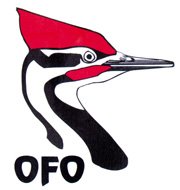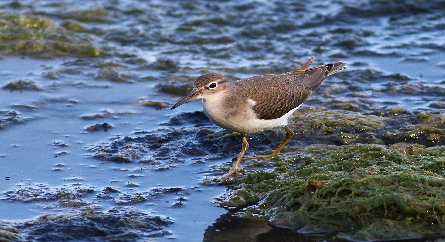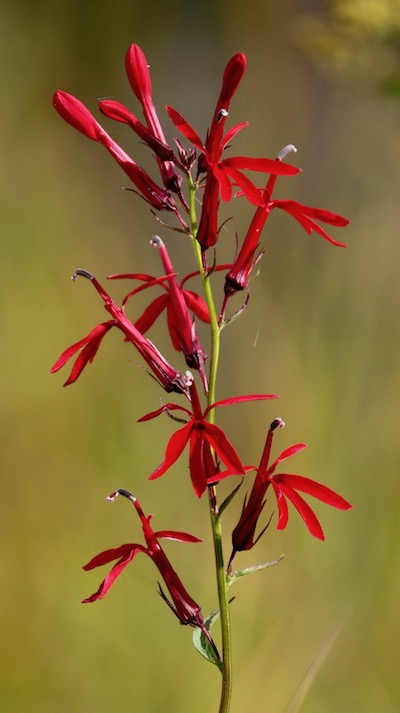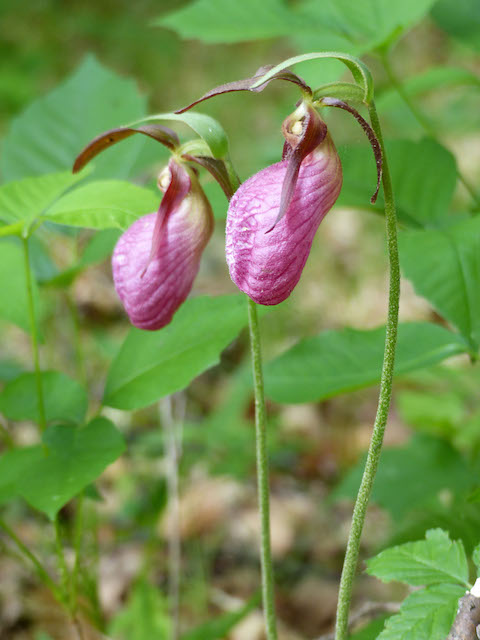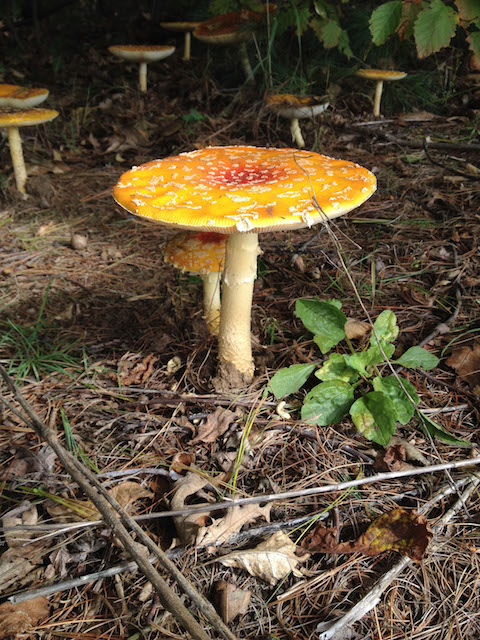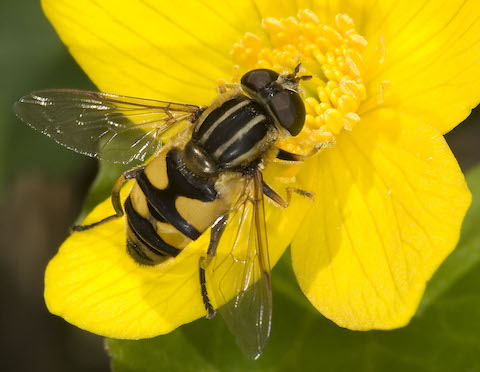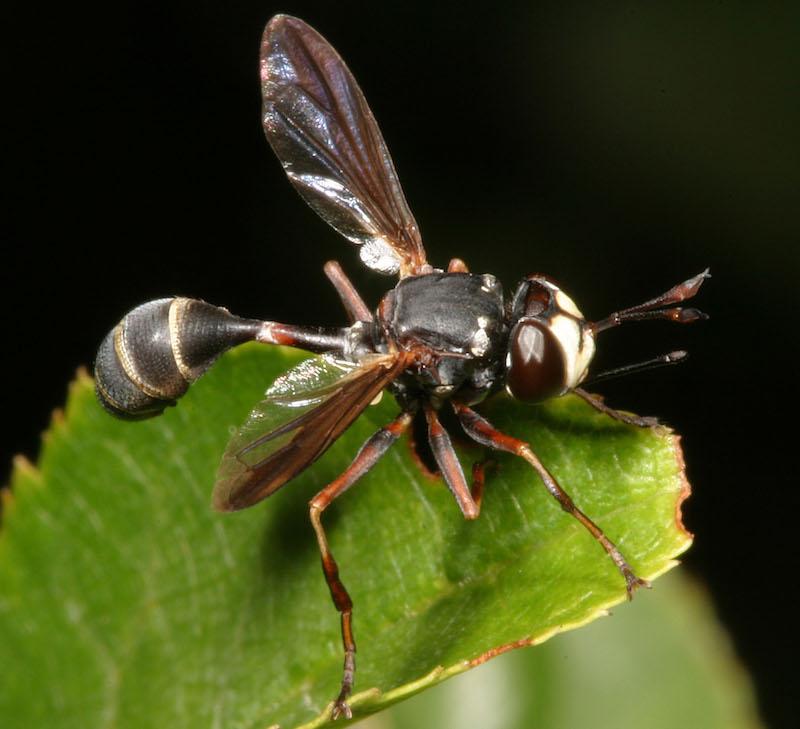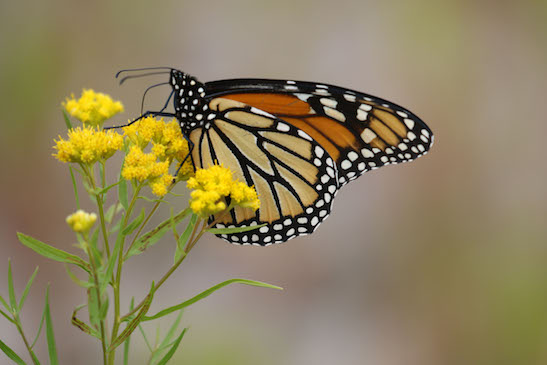OFO’s resources for learning non-birds
If you want a bit of stimulation beyond birds, there are lots of amazing resources available to help you identify other things around your yard or neighbourhood.
Bonus: Understanding more about the natural world beyond birds will make you a better birder as well.
Plants
Plants are getting easier to identify than ever with the help of iNaturalist. If you haven’t tried out their photo identification engine, give it a try with some of the plants around your area. It is remarkably good at identifying species from leaves or flowers, but a bit hit and miss from bark or winter remnants. Stick to native species though as it doesn’t do so well with garden plants. If the identification engine fails, humans will usually weigh in and help with identifications. There’s also a pretty useful app called Ontario Wildflowers for Android and iOS for plant ID. If you are a traditionalist and prefer field guides for your plant identification, here are a couple of options for plants that we recommend: Shrubs of Ontario (out of print so getting expensive), Trees of Ontario or the Sibley Guide to Trees and Newcomb’s Wildflower Guide. Getting to know your plants is really important for any naturalist but will really help you focus your bird finding on the correct habitats and will be of great help during the next Ontario Breeding Bird Atlas.
Fungi
Although excellent with plants, iNaturalist is still poor for the identification of fungi. You will need lots of field guides if you get into fungi, but a good starting point is George Barron’s guide Mushrooms of Ontario and Eastern Canada. It is hard to get at affordable prices these days so other options are Mushrooms and Other Fungi of North America, Mushrooms of the Northeast: A Simple Guide to Common Mushrooms or North American Mushrooms: A Field Guide To Edible And Inedible.
Insects
If you want to really dive off the deep end into a huge pool of biodiversity, then it’s time to consider insects. Insect watching and identification has never been easier than now as there are far more resources available than ever for getting to know these animals.
The single best online resource for insects is BugGuide. Use iNaturalist to try to hone in on what you have found (iNaturalist is still hit and miss for insects but should get you to the group), and then BugGuide may be able to get you to an identification.
There are some excellent general books available, such as Steve Marshall’s Insects: Their Natural History and Diversity: With a Photographic Guide to Insects of Eastern North America and Flies: The Natural History and Diversity of Diptera.
Most birders start with butterflies and dragonflies so let’s look at some of the resources available there.
Butterflies
For butterflies, there are a couple of superb options in Ontario. Our own OFO members, Peter Hall and Colin Jones, are amongst the authors of The ROM Field Guide to Butterflies of Ontario. This is a great one stop shopping place for butterfly information. Rick Cavasin has a great website devoted to our butterflies (https://www.ontariobutterflies.ca). Through that website you can also purchase Rick’s amazing pocket guides. iNaturalist is also very good at identifying Ontario butterfly images. The Toronto Entomologists’ Association also runs the Ontario Butterfly Atlas which is a great source of information on when and where to find butterflies.
Moths
If you are interested in moths, OFO’s own David Beadle, and former editor of OFO news Seabrooke Leckie, have produced the amazing Peterson Field Guide to Moths of Northeastern North America which is a must-have. For online resources, Moth Photographers Group is the go-to, especially its plate series. iNaturalist is also pretty good, and you can join the Ontario Moth Atlas project while you’re at it.
Dragonflies
Colin Jones was also involved with production of the Field Guide to Dragonflies and Damselflies of Algonquin Provincial Park and the Surrounding Area (along with other OFO members Andrea Kingsley, Peter Burke and Matt Holder). This book covers most of our provincial fauna and is the best bet for an all in one guide covering our region. Other options for odonates include: Damselflies of the Northeast: A Guide to the Species of Eastern Canada & the Northeastern United States (out of print so expensive) or Dennis Paulson’s Dragonflies and Damselflies of the East. We may be repeating ourselves, but iNaturalist photo-recognition performs pretty well for Ontario dragonflies and damselflies.
Flower Flies
The list might have stopped with butterflies, moths, dragonflies and damselflies a few years ago but more and more resources are popping up for other insect groups. OFO’s Jeff Skevington and Bill Crins were amongst the authors of the new Field Guide to the Flower Flies of Northeastern North America. This field guide is the first comprehensive guide to any group of flies in North America. Flower flies, also known as hover flies, are excellent mimics of bees and wasps and common in gardens and forests across our province and are as important to pollination as are bees. With only 324 species known from Ontario, flower flies are a smaller group to learn that birds. Why not spend some quarantine time getting to know them?
Beetles
Other families of insects with good field guides include: A Field Guide to the Tiger Beetles of the United States and Canada: Identification, Natural History, and Distribution of the Cicindelinae and Field Guide to the Jewel Beetles (Coleoptera: Buprestidae) of Northeastern North America. This latter was a free guide and disappeared quickly but is still available online as a free pdf. Some non-field guide reference books worth considering include: Cerambycidae (Coleoptera) of Canada and Alaska (expensive but an amazing and comprehensive book to our long-horned beetles — if you want a cheaper option, try Doug Yanega’s Field Guide to Northeastern Longhorned Beetles (Coleoptera: Cerambycidae)), and Steve Marshall’s book on beetles (Beetles: The Natural History and Diversity of Coleoptera).
There are many more resources available, but this should keep you busy through the pandemic and once it is over, imagine how big your playground will be with all of your new knowledge!
[WP]
